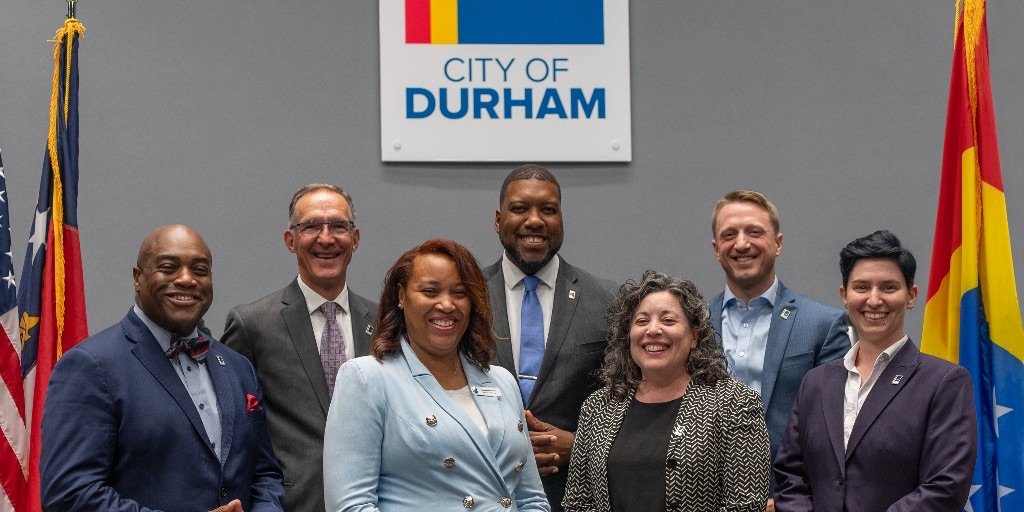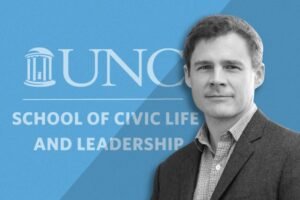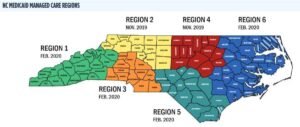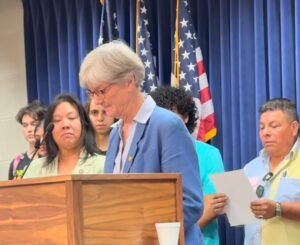DURHAM – Durham Mayor Leo Williams, joined by Durham County Commissioner Chair Nida Allam and Durham Public Schools (DPS) Board Chair Millicent Rogers, called for unity and resilience at a press conference Wednesday in response to recent incidents affecting the community. The event addressed issues including recent vandalism and racially motivated digital harassment, notably a spate of racist messages sent to local K-12 and college students.
Williams opened the conference by addressing Durham’s media portrayal and its focus on crime rates, which has been a recurring topic of concern. “We want to be sure we are responding with integrity, whether you ask [questions] in that form or not,” Williams stated. “We are aware that there is crime. It happens in our city, just like any other city, especially communities of our size.”
After his initial comments, Williams yielded the podium to Commissioner Allam and Board Chair Rogers, who shared updates on county services and educational achievements within Durham. Allam highlighted Durham’s healthcare sector, emphasizing the city’s regional importance as a provider of specialized medical care. According to Allam, patients from neighboring Wake County frequently travel to Durham for specific treatments and the recognized expertise of local providers. Allam also referenced Durham’s healthcare training programs, many of which supply skilled healthcare professionals who serve throughout the Triangle area.
Following Allam, Rogers spoke on milestones within Durham Public Schools. She pointed out that DPS graduates from the class of 2024 earned a collective $77.1 million in scholarships and noted academic improvements within the district. “80.8% of DPS schools have met or exceeded growth for the 2023-24 school year,” Rogers stated. She also highlighted DPS’s initiative to offer free breakfast and lunch to all students, regardless of socioeconomic status, aimed at providing equitable access to nutrition.
When Williams returned to the podium, he faced questions regarding crime statistics and the city’s strategy to improve public safety. In response to a journalist’s inquiry on when Durham residents could expect measurable outcomes, Williams shifted the focus to contextual data, questioning how Durham’s crime statistics might be influenced by non-resident activity. Referring to data from the Wake County Sheriff’s Department, Williams noted that arrests of Durham residents in Wake County had risen by 35% over five years. He suggested that similar statistics should be reviewed for non-residents who may impact Durham’s crime rate, raising questions about how regional crime patterns may intersect.
The exchange between Williams and the reporter continued with a question about the mayor’s responsibility in addressing city crime. Williams acknowledged his role, stating, “I’m the mayor of the city. My responsibility is to incorporate policy that will reduce bad things and enhance positive things.” He noted that certain framing in media questions could oversimplify complex issues, potentially skewing public perception. “You choose the angle. The angle will choose the story,” he commented.
Williams concluded by affirming his commitment to improving the city’s safety and quality of life, stating, “We’re going to continue to do what we need to do in Durham to make this continue to be the amazing place that it is to live.”
Durham officials face ongoing challenges, balancing efforts to address crime while promoting the city’s achievements in healthcare and education. According to data from the North Carolina Department of Public Safety, while Durham’s overall violent crime rate was above the state average in 2023, property crimes and juvenile crimes were near or below statewide levels. City leaders have cited this as part of a broader discussion on crime perception versus crime reality, with efforts to address safety through community programs and investments in education and healthcare.













